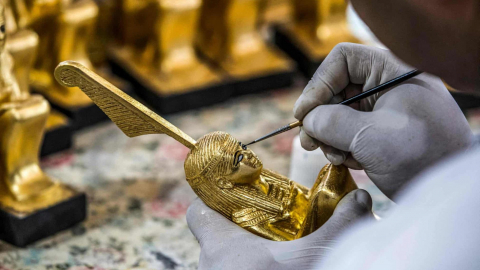When mentioning Cairo, many people immediately think of the Giza Pyramids, the legendary Nile River or bustling ancient markets. However, behind that cultural halo exists a little-known neighborhood - Manshiyat Naser. Different from the image of a modern city, Manshiyat Naser appears as a completely different world, where garbage is part of daily life.
Considered one of Cairo’s poorest slums, Manshiyat Naser seems to be forgotten in urban development plans. However, behind its rough exterior lies a system of sorting, recycling and living around trash – work that has sustained tens of thousands of residents here for generations.
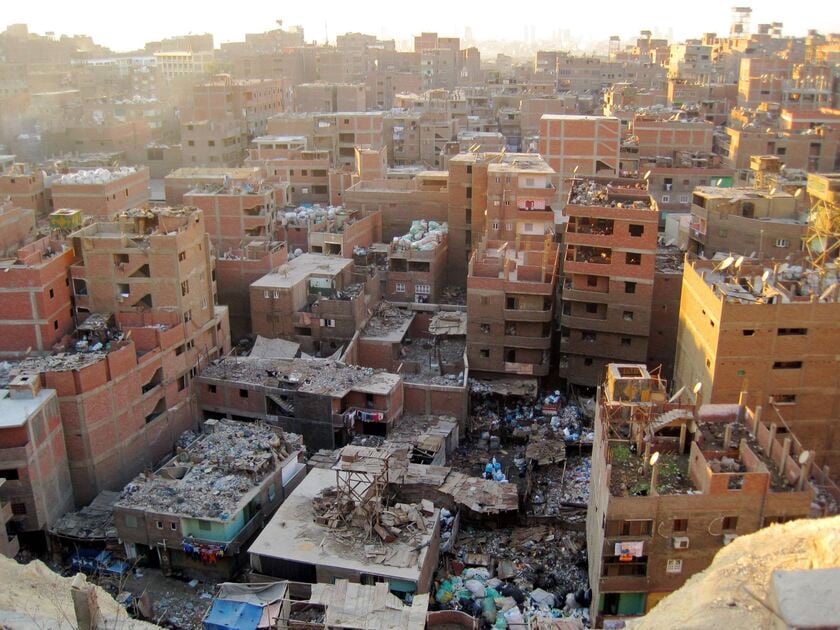
Manshiyat Naser, also known as “Garbage City”, is a residential area of the Zabbaleen community specializing in waste disposal in the east of the capital Cairo (Egypt)
A neighborhood living with trash
Manshiyat Naser is located at the foot of Mount Mokattam, on the eastern outskirts of Cairo. With more than 60,000 residents, the area is home to a large community of Zabbaleen – Arabic for “garbage pickers”. For decades, they have collected trash from all over Cairo and brought it back to their neighborhood to be sorted and recycled.
Unlike the conventional image of garbage collection, the Zabbaleen carry out the process systematically: garbage is sorted at home, separating plastic, metal, paper, fabric and food waste. Of this, about 80% is recycled - a rate that surpasses many large cities around the world, where the figure hovers around 20-25%.
Every day, trucks loaded with garbage are brought from central Cairo to Manshiyat Naser, where, in unplastered brick houses, rubbish is piled up to the ceiling. The seemingly chaotic scene is part of the ecosystem that the Zabbaleen community has maintained for generations.

Every day, trucks loaded with garbage are transported from central Cairo to Manshiyat Naser.
Zabbaleen Heritage and Traditions
The Zabbaleen community is a Coptic Christian community that migrated to Cairo from southern Egypt in the 1940s. Initially, they made a living by raising pigs and collecting organic waste for animal feed. Later, as the amount of waste in the capital increased rapidly, waste collection and recycling became the main source of income for the entire community.
For the Zabbaleen, sorting trash is a skill passed down from generation to generation. Children grow up surrounded by trash, learning to identify different materials, how to take apart old electronic devices, and even how to recycle aluminum cans into useful items. The work is hard and often stigmatized, but it provides them with a sustainable livelihood.
Many households operate small recycling workshops in their homes. Some specialize in plastics, others in paper recycling, or in the reuse of metal and glass. All create a closed value chain where “waste” becomes a valuable resource.
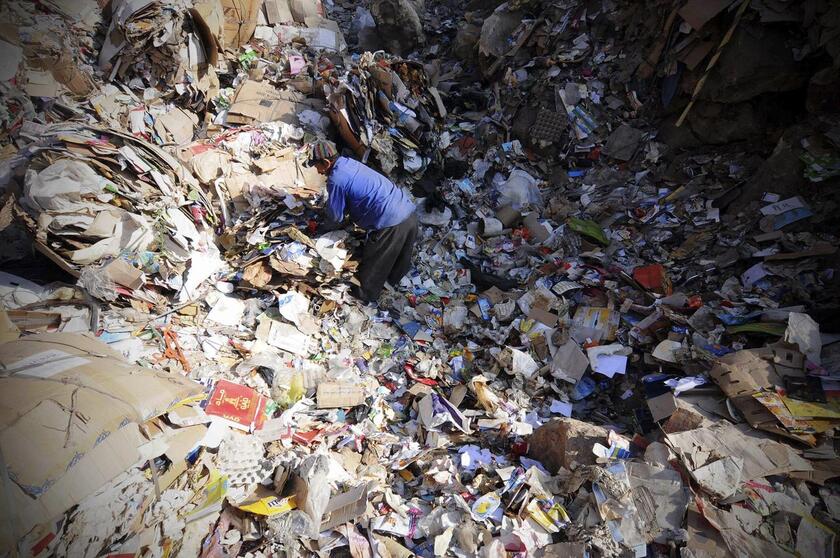
For the Zabbaleen, garbage sorting is a skill passed down from generation to generation.
Challenges from policy and modernization
Despite their crucial role in the city’s waste management, the Zabbaleen have been marginalized in urban management policies. The Egyptian government has repeatedly tried to modernize the waste collection system by hiring foreign companies. However, the results have not been as expected.
In 2003, Cairo contracted with several European waste collection companies. These companies used enclosed trucks, which did not allow the Zabbaleen access to the waste as before. This cost many their livelihoods and caused a significant drop in recycling rates, as the companies did not separate the waste at source.
Another shock came in 2009, when the government ordered the culling of the Zabbaleen’s entire pig herd – the Zabbaleen’s main source of income – to prevent a swine flu outbreak. Thousands of people lost their livelihoods, while organic waste was no longer managed as efficiently as before.
Despite the challenges, the Zabbaleen remain resilient in Manshiyat Naser, continuing their recycling work and maintaining a way of life that has been with them for generations.
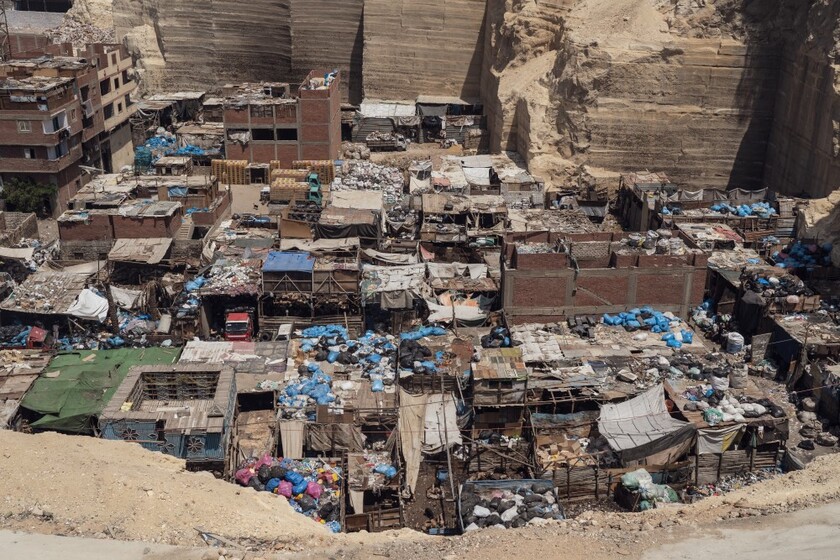
Despite their vital role in the city's waste management, the Zabbaleen remain marginalized in urban governance policies.
Inside “Garbage City”
Upon arriving in Manshiyat Naser, visitors may be overwhelmed by the sight of narrow streets lined with garbage trucks, plastic bags hanging from balconies, and the stench of garbage permeating everywhere. However, if you go deeper, another aspect of the neighborhood will appear: the industriousness, creativity, and community spirit of its residents.
A special highlight is the Saint Simon Church, also known as “the cave”, located deep in the Mokattam Mountains. This is a place of religious activities for the Zabbaleen Christian community, and is also a rare cultural and spiritual symbol in a neighborhood associated with the image of garbage.
In recent years, a number of NGOs and social projects have stepped in to help the Zabbaleen improve their living conditions. Schools, health centers and vocational training programs have been gradually established. However, changing society’s perception of “waste pickers” still has a long way to go.
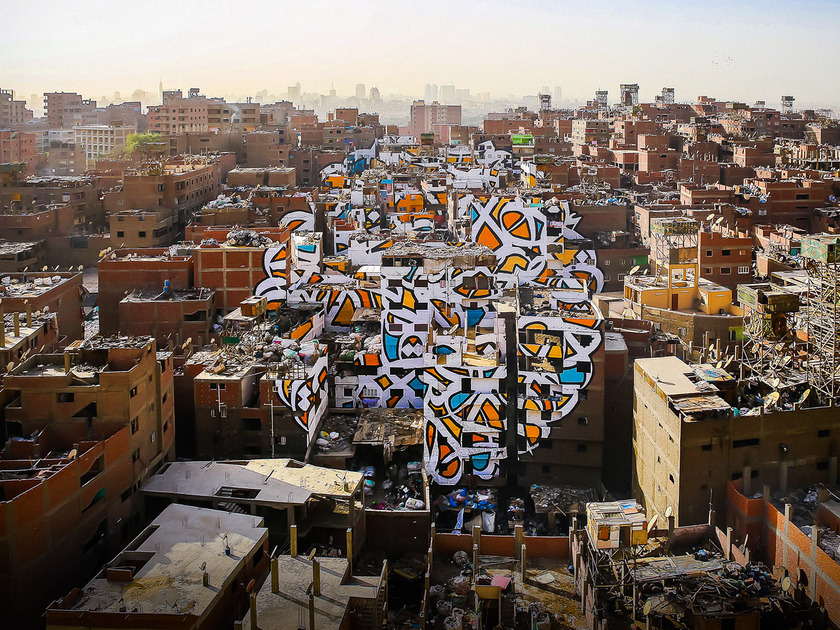
"Perception" - a striking street art piece in Manshiyat Naser, created by Tunisian-French artist eL Seed in 2016. The piece spans over 50 houses, only complete when viewed from afar, and is meant to challenge social stereotypes towards the Zabbaleen community.
Garbage is not just garbage
Manshiyat Naser and the Zabbaleen community offer a different perspective on urbanization, recycling, and sustainability. While many large cities around the world struggle with the problem of waste, the people of “garbage city” are quietly doing the same job every day, without a labor contract or formal support system.
In Manshiyat Naser, trash is not simply something to be thrown away, but a part of life, a source of livelihood, a job, and also a testament to human resilience in the face of adversity. And perhaps, hidden in that seemingly worthless pile of scrap, are valuable lessons about resilience, community, and regeneration.





























